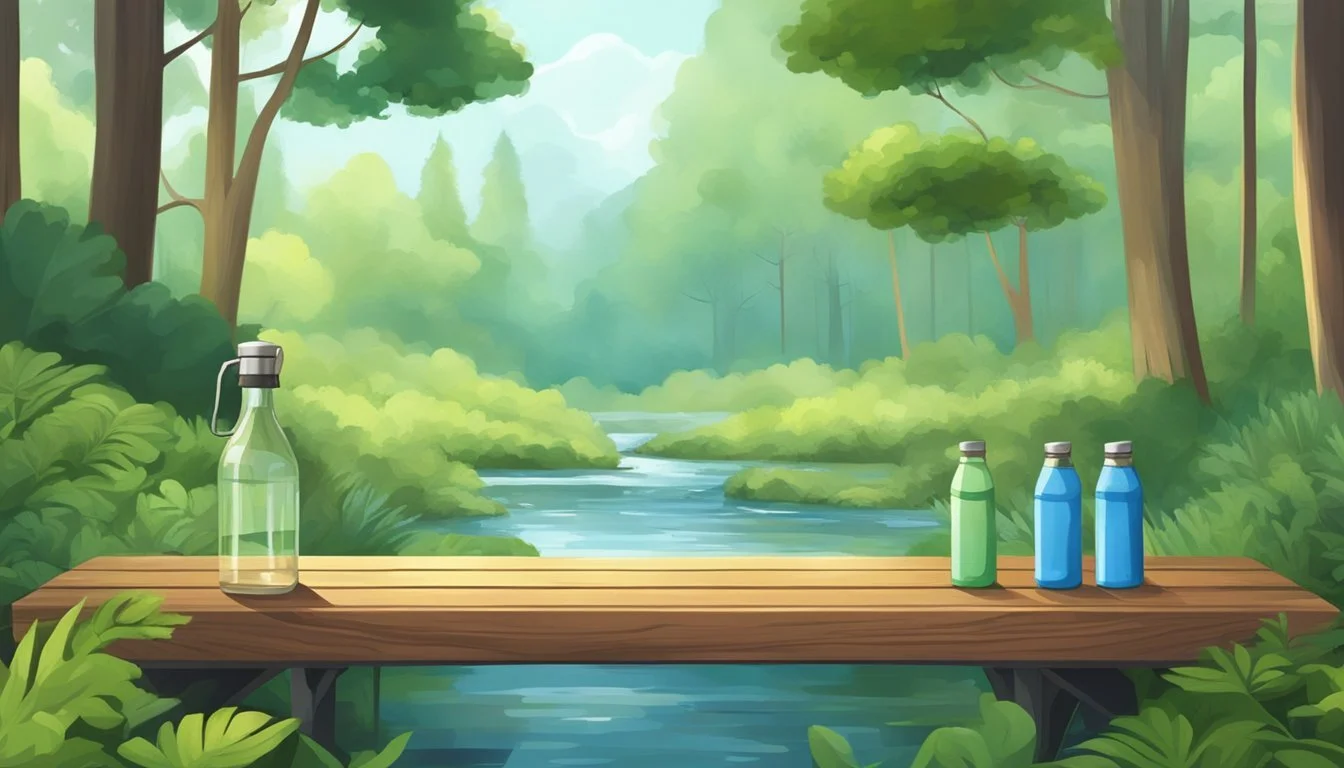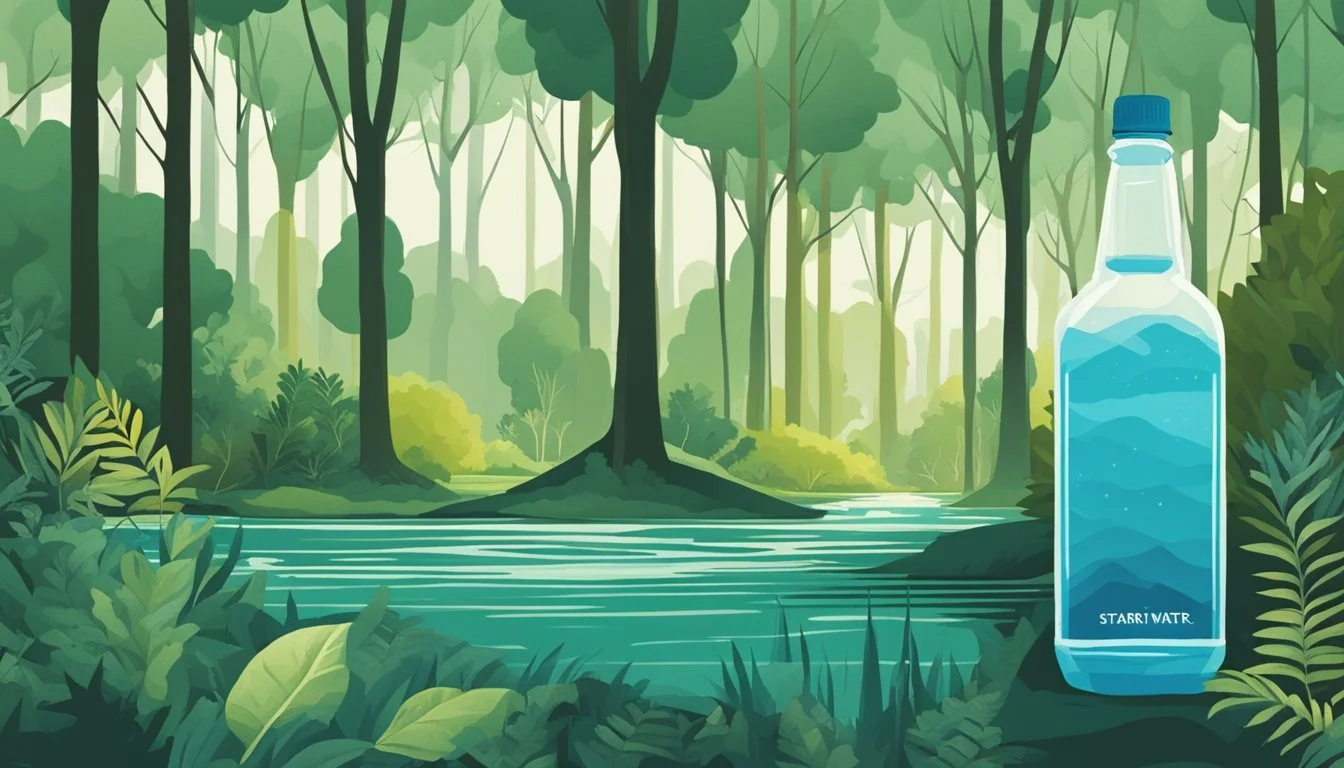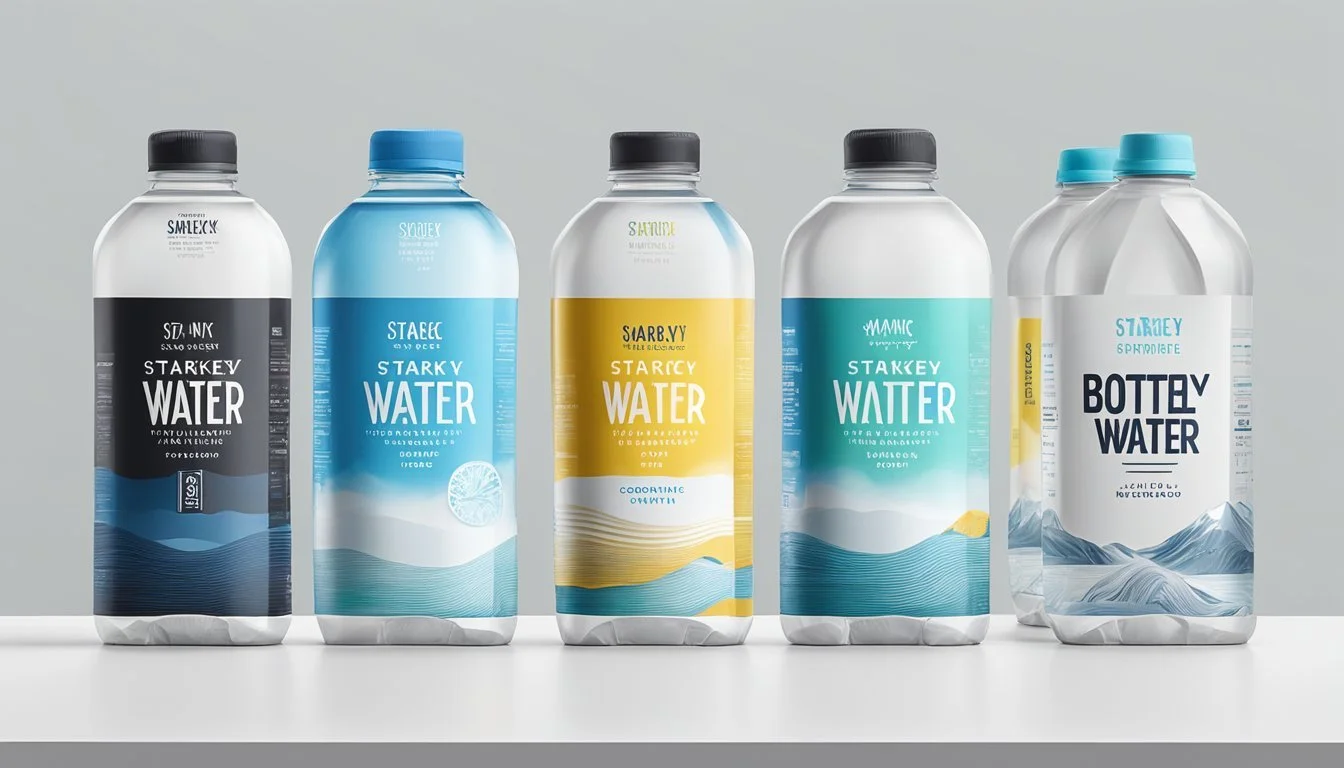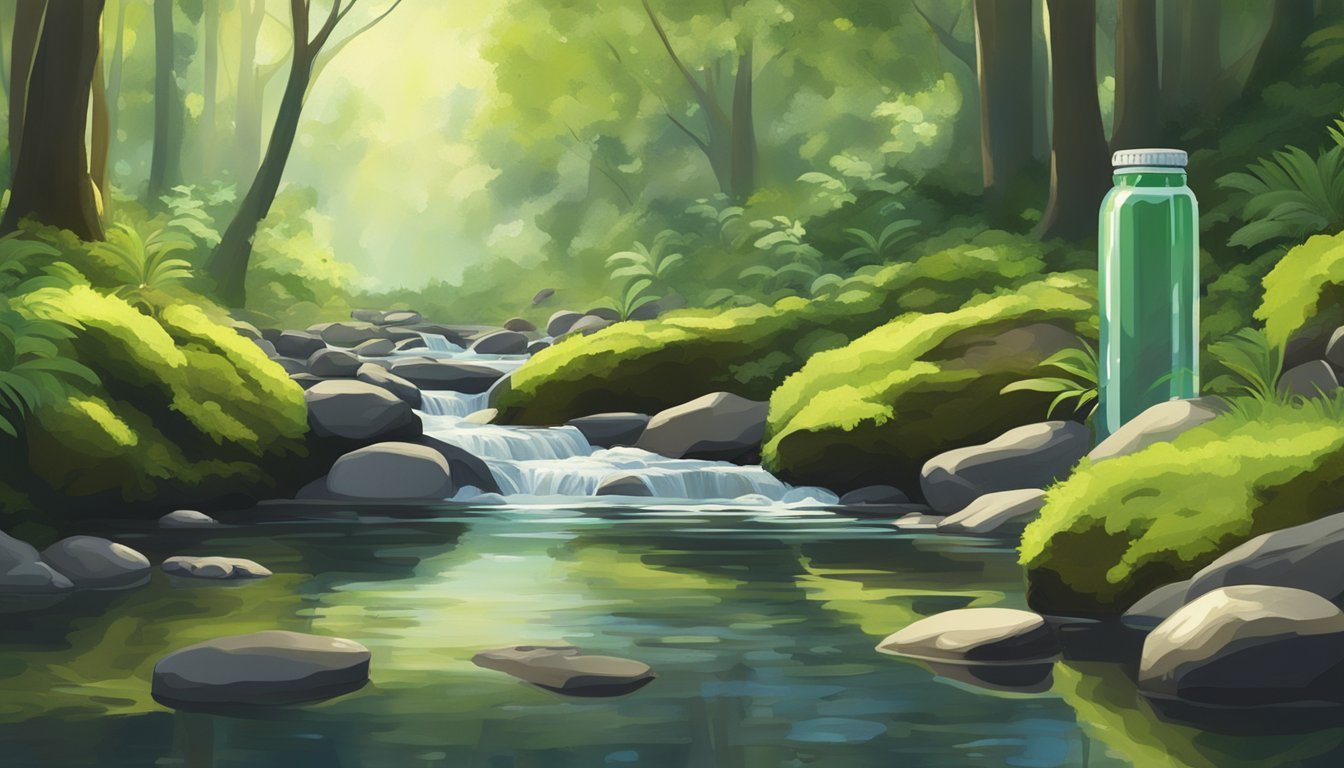Boxed Water vs. Starkey
Which Bottled Water is Better for You?
When it comes to choosing bottled water, consumers often weigh factors like taste, health benefits, and environmental impact. Boxed Water and Starkey are two prominent brands that stand out in this saturated market. Boxed Water Is Better truly lives up to its name with a refreshing, crisp taste and sustainable packaging.
Starkey offers a different experience altogether with its unique mineral composition sourced from geothermal springs. Health-conscious consumers might appreciate the natural minerals found in Starkey compared to the neutral taste of Boxed Water. Both brands cater to different preferences, making the choice largely dependent on individual priorities.
Environmental considerations also play a significant role in this choice. Boxed Water's cartons, made from a mix of sustainable paper and minimal plastic, provide a more eco-friendly option compared to traditional plastic bottles. Starkey, on the other hand, uses conventional plastic, which might not appeal to those prioritizing sustainability.
Understanding Boxed Water and Starkey
Boxed Water and Starkey represent two distinct approaches to bottled water, each with its unique attributes in terms of packaging, purity, and environmental impact.
The Emergence of Boxed Water Brands
Boxed Water companies such as Boxed Water Is Better and Just Water aim to provide environmentally friendly alternatives to traditional bottled water. Founded in 2009, Boxed Water Is Better was among the first to sell water in cartons, which are primarily made of sustainable paper. Their packaging claims to be 92% plant-based, significantly reducing the reliance on plastic.
Just Water also focuses on eco-friendly packaging, using paper, aluminum, and plastic to ensure water quality and storage. Both brands offer purified water, employing processes like ultraviolet light treatment, carbon filtration, and reverse osmosis to eliminate impurities.
Consumers are drawn to these brands for their commitment to reducing environmental impact and providing purity in drinking water.
Starkey Water: A Brief Overview
Starkey Water distinguishes itself with its sourcing and mineral content. This brand prides itself on its naturally occurring, high-mineral content water sourced from a deep thermal spring in Idaho. The water is bottled at the source, ensuring that the mineral properties, which contribute to its taste and potential health benefits, are preserved.
While Starkey does not emphasize eco-friendly packaging as strongly as boxed water brands, it focuses on delivering a premium, naturally alkaline product. Starkey's water undergoes minimal processing to maintain its natural purity, catering to consumers looking for mineral-rich bottled water options.
Environmental Considerations
Environmental considerations for bottled water focus on factors such as the sustainability of packaging materials and the environmental impact of distribution. Analyzing Boxed Water and Starkey through these lenses reveals important differences.
Sustainability and Packaging Materials
Boxed Water uses cartons that primarily consist of 74% paper, 25% plastic, and 1% aluminum. This composition aims to reduce reliance on plastics. Paper, derived from renewable trees, emphasizes sustainability. The plastic layer ensures the carton remains watertight and sealed.
In contrast, Starkey water relies on traditional plastic bottles. While these are recyclable, plastic production and disposal pose significant environmental concerns. Reducing plastic usage remains critical, given the associated pollution and resource consumption.
Overall, Boxed Water's cartons, with their renewable base, present a more sustainable option compared to Starkey’s plastic bottles, which have a higher environmental footprint due to their material composition.
Environmental Impact of Distribution
Boxed Water and Starkey also differ in the environmental impacts of their distribution methods. Boxed Water's cartons are lighter and more compact, which can translate to fewer emissions during transportation. Efficient packing of cartons on trucks allows for more efficient space usage, potentially reducing the number of trips needed.
Starkey water, packaged in plastic bottles, typically results in higher transportation emissions due to the weight and shape of the bottles. Plastic bottles also take up more space, leading to less efficient shipping processes.
As a result, the distribution method of Boxed Water appears to be more environmentally friendly, suggesting lower overall emissions compared to Starkey. Reducing transportation emissions is pivotal in minimizing the total environmental footprint of any bottled water product.
Health and Safety Concerns
When comparing Boxed Water and Starkey bottled water, it’s essential to understand their regulation and safety standards, as well as the contaminants that might be present.
Bottled Water Regulation and Standards
The safety of bottled water depends significantly on the regulations that apply to its production. In the United States, the Food and Drug Administration (FDA) regulates bottled water, setting standards that bottlers must meet. These standards are generally based on the Environmental Protection Agency (EPA) standards for tap water, covering aspects such as contaminant levels, chemical safety, and microbial contaminants.
However, the FDA's oversight has faced criticism for being less stringent compared to the EPA’s regulation of tap water. For example, Consumer Reports has highlighted inconsistencies and some lax oversight in the bottled water industry. Boxed Water and Starkey must comply with these regulations but differ in packaging materials, with Boxed Water using recyclable cartons and Starkey using plastic bottles which can harbor microplastics.
Potential Contaminants and Public Perception
Contaminants in bottled water can vary widely. Consumer Reports found toxic PFAS chemicals in several popular water brands. PFAS, or per- and polyfluoroalkyl substances, are harmful substances linked to various health issues. Starkey, along with other brands, was tested, raising concerns about the presence of such contaminants.
Public perception often considers bottled water to be safer than tap water, though research does not always support this. Many associate bottled water with higher quality, but studies indicate that contaminants like microplastics are prevalent due to plastic packaging. Plastic bottles used by Starkey pose a risk of microplastic contamination, whereas Boxed Water's plant-based packaging might offer a safer alternative regarding microplastics presence.
These considerations highlight the importance of checking regulatory compliance and understanding potential contaminants when choosing between bottled water options.
Taste and Water Quality
Examining the taste and quality between Boxed Water and Starkey reveals critical differences that can influence consumer preferences. The origin and filtration processes play significant roles in defining the taste and purity levels of these two brands.
Taste Profiles of Boxed Water and Starkey
Boxed Water typically exhibits a clean and neutral taste. This is due to its purification process, which removes impurities and results in a subtle but satisfying flavor. There are also flavored varieties like Grapefruit and Lemon, adding a slight fruity hint without overwhelming the basic water taste.
Starkey Water, harvested from a geothermal spring, has a natural mineral content that can result in a slightly more pronounced taste. This mineral presence gives it a distinct, earthy quality, which some drinkers find refreshing while others might find it strong or unfamiliar.
Sources and Filtration Processes
Boxed Water sources its water from municipal supplies that are then purified through an 8-step process. This process includes reverse osmosis, carbon filtration, and UV light treatment to ensure the water is pure. This rigorous filtration ensures consistency and a lack of contaminants, leading to its neutral taste profile.
Starkey Water is natural spring water originating from a geothermal source in Idaho. This water is naturally filtered through rock formations, which imbue it with minerals such as calcium, lithium, and silica. These minerals contribute both to its taste and potential health benefits. The filtration process for Starkey is minimal, focusing on maintaining the water's natural composition.
Both brands have their unique qualities and filtration methods that cater to different taste preferences and consumer expectations.
Comparative Analysis of Packaging Solutions
The packaging solutions of Boxed Water and Starkey Water differ significantly in materials, environmental impact, and convenience.
Boxed Water: The Innovation in Water Packaging
Boxed Water uses cartons composed primarily of sustainable paper. This packaging consists of 74% paper, 1% aluminum, and 25% plastic film. The plastic film ensures water resistance and proper sealing.
Boxed Water incorporates a plant-based cap, which is a step towards reducing plastic usage. These cartons are designed to be recyclable, aligning with environmental sustainability goals.
The company emphasizes its product's BPA-free attribute, reducing the potential risk of chemical leaching. This combination of materials showcases a forward-thinking approach to eco-friendly water packaging.
Starkey's Traditional Approach
Starkey Water relies on plastic bottles, a more conventional choice for water packaging. These bottles are made of PET plastic, which is recyclable but still contributes to plastic waste.
Plastic bottles are lightweight, shatter-resistant, and convenient. However, they have a significant environmental footprint, particularly in terms of production and disposal.
While Starkey does not highlight innovative materials, its approach emphasizes durability and practical usability. This remains a popular choice despite the growing concerns over plastic pollution.
Starkey provides a reliable, if less sustainable, packaging option for consumers who prioritize traditional convenience.
Consumer Convenience and Usage
When choosing between Boxed Water and Starkey, consumers often consider factors such as ease of use and environmental impact. Key comparisons include the convenience of carrying and using the packaging, as well as the potential for reusability and recyclability.
Convenience of Boxed Vs. Bottled Water
Boxed Water uses a carton-based packaging that is light and easy to carry. The design resembles a traditional milk carton, which many users find appealing and practical.
Starkey, on the other hand, comes in more conventional plastic bottles. These are familiar to most consumers and fit well in cup holders and backpacks.
Boxed Water’s cartons can be more difficult to reseal once opened. This can be a disadvantage for users needing a portable solution. Meanwhile, Starkey bottles often come with screw caps that can be securely closed, making them more convenient for on-the-go hydration.
Reusability and Recyclability
Boxed Water packaging is made primarily from paper, a renewable resource. Estimates indicate that 92% of its packaging is plant-based. This leads to a significantly lower environmental impact compared to traditional plastic bottles.
Despite the sustainable materials, the reusability of Boxed Water's cartons is limited. Once opened, they are not designed to be resealed securely or reused effectively. Nevertheless, the cartons are recyclable, provided the appropriate facilities are available.
Starkey bottles are made from plastic, commonly PET, which is widely recyclable. While not as eco-friendly as boxed packaging, these bottles are easier to reuse multiple times before being recycled, contributing somewhat to reducing single-use plastic waste.
Both options present trade-offs between immediate convenience and long-term environmental considerations.
Market Trends and Consumer Preferences
Boxed Water and Starkey's position in the market reflects shifting consumer preferences towards sustainability and health-conscious choices.
Emerging Water Brands and Market Shifts
The bottled water market has seen significant changes with the rise of emerging brands like Boxed Water and Starkey. Boxed Water, known for its eco-friendly packaging, appeals to environmentally aware consumers.
Starkey's focus on premium spring water differentiates it from competitors. The market size for bottled water was estimated at USD 274 billion in 2024, projected to reach USD 380.5 billion by 2029. This growth signifies a strong consumer shift toward natural and sustainable water options, influenced by growing health consciousness and environmental concerns.
Consumer Expectations and Greenwashing
Consumers increasingly prefer products marketed as sustainable. Boxed Water's recyclable cartons cater to this demand. Starkey, meanwhile, emphasizes purity and mineral content, targeting health-conscious buyers.
Greenwashing is a prevalent issue. Brands must ensure sustainability claims are genuine to maintain consumer trust. Transparency in sourcing and production processes is crucial. According to industry data, U.S. bottled water sales have consistently risen, reflecting the enduring popularity and evolving preferences for greener, health-focused choices.
The Broader Environmental Conversation
The conversation about bottled water extends beyond individual brands to broader environmental concerns. Issues include global impact, local initiatives, and corporate responsibility.
Global Impact and Local Initiatives
The environmental footprint of bottled water is a key issue. Boxed Water employs cartons made of 74% paper, a renewable resource, versus Starkey’s single-use plastic bottles.
Calculating the carbon footprint from production to transportation shows Boxed Water often fares better.
Local initiatives also play a role. Some companies engage in tree-planting projects or water conservation efforts. Boxed Water, for example, plants trees to offset its environmental impact—over 1,000,000 trees planted to date.
These efforts not only aid the environment but also bolster community support.
Corporate Responsibility and Partnerships
Corporate responsibility is pivotal. Both Boxed Water and Starkey prioritize sustainability in varied ways. Boxed Water partners with environmental organizations like the National Forest Foundation.
Such alliances enhance their sustainability credentials and promote environmental advocacy.
Starkey focuses on water sourcing and minimal processing to maintain product purity. Their local sourcing minimizes transport emissions, emphasizing regional sustainability.
Beyond production practices, responsible corporate behavior influences consumer trust. Strategic partnerships and transparent policies can drive meaningful change in the bottled water industry.
The Future of Water Consumption
The future of water consumption heavily depends on innovations in how water is delivered and better consumer education for sustainable choices. Both aspects are crucial in guiding consumer habits towards more environmentally friendly practices.
Innovations in Water Delivery
Emerging technologies are revolutionizing the way water is packaged and delivered. Sustainable packaging, such as that used by Boxed Water, incorporates materials like paper from sustainable forests, reducing environmental impact.
Smartwater focuses on advanced filtration and remineralization techniques to enhance taste while ensuring purity.
Another promising innovation is the development of plant-based bioplastics. These minimize reliance on fossil fuels and offer a biodegradable option for bottle packaging.
Initiatives like water refill stations are gaining popularity in urban areas, encouraging the use of reusable containers.
Educating Consumers for Sustainable Choices
Consumer education plays a pivotal role in driving sustainable water consumption. Knowledge about the environmental impact of plastic waste helps shift preferences towards eco-friendly options.
Campaigns focusing on the benefits of sustainable choices, such as Boxed Water's commitment to reducing plastic use, are effective.
Educational programs in schools can shape young minds towards responsible consumption.
Clearly labeled packaging provides transparency, allowing consumers to make informed decisions quickly.
Influencers and organizations are critical in spreading awareness through social media and other channels. This outreach increases the adoption of sustainable products and practices among consumers.
Conclusion: Choosing Your Water Wisely
When deciding between Boxed Water and Starkey, several factors come into play. Each has unique strengths and weaknesses that may appeal to different individuals based on their preferences and priorities.
Boxed Water:
Sustainability: Made from 74% paper, 1% aluminum, and 25% plastic to ensure waterproofing. This design emphasizes eco-friendliness.
Taste: Generally considered crisp and refreshing.
Packaging: The fun milk box-style design adds a playful touch.
Starkey:
Source: Sourced from a natural geothermal spring, known for its high mineral content.
Taste: Distinct, with a noticeable minerality that some may find appealing.
Packaging: Traditional plastic bottles, which hold a reputation for convenience but pose environmental challenges.
Bottom Line:
Personal Preferences: If one prioritizes taste and mineral content, Starkey might be the ideal choice.
Eco-Friendly Approach: Boxed Water offers a more sustainable option, great for those concerned about environmental impact.
Reusable Bottles:
Convenience and Wellness: Opting for reusable bottles can be both practical and beneficial for wellness.
Personal Requirements: Evaluate how often water is consumed and the ease of carrying bottles around.
The decision on which water to choose boils down to personal priorities. Those focused on taste and source may lean towards Starkey, while those driven by sustainability and eco-friendliness might prefer Boxed Water.







